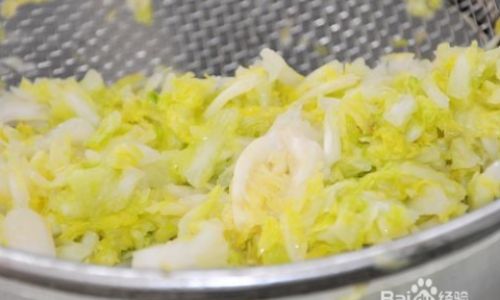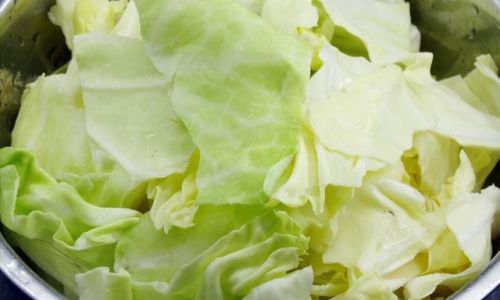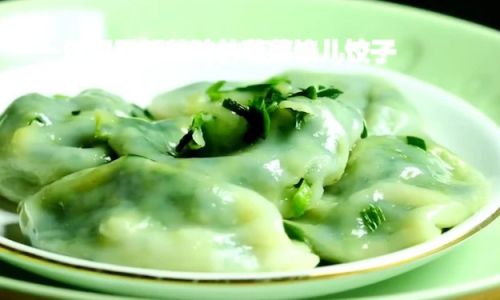Table of content
Pickled cabbage, a culinary chameleon that transcends borders and cultures, has graced tables for centuries with its tangy crunch and versatile flavor. From the fiery kick of Korean kimchi to the earthy simplicity of European sauerkraut, this humble vegetable transforms into a gastronomic gem when treated to the alchemy of fermentation or brining. Mastering the art of pickling cabbage not only preserves its natural freshness but also unlocks a spectrum of tastes that can elevate sandwiches, salads, stews, and more. This comprehensive guide will walk you through the time-tested techniques, expert tips, and creative twists needed to achieve pickled cabbage perfection.
The Timeless Appeal of Pickled Cabbage
Cabbage, a member of the Brassica oleraceae family, has been cultivated for millennia, with evidence of its consumption dating back to Neolithic times. Its durability and nutritional density made it a staple in colder climates, where fresh produce was scarce during winter months. Pickling emerged as a preservation method, utilizing salt and time to ward off spoilage while enhancing flavor. Today, pickled cabbage is celebrated not just for its shelf life but for its probiotic-rich goodness, digestive benefits, and ability to cut through rich, fatty dishes with its vibrant acidity.
Understanding the Science of Pickling
At its core, pickling is a dance between salt, bacteria, and time. When cabbage is submerged in a brine (a solution of salt and water), it creates an environment where beneficial lactic acid bacteria (LAB) thrive while harmful microbes are suppressed. These LAB consume the natural sugars in cabbage, producing lactic acid—a preservative that lowers the pH and imparts that signature tang. The process, known as lacto-fermentation, requires patience but rewards with complex flavors and a satisfying crunch.
Step-by-Step Guide to Perfectly Pickled Cabbage
Selecting the Right Cabbage
The foundation of great pickled cabbage begins at the market. Opt for firm, compact heads with crisp leaves. Avoid wilted or bruised specimens, as these may harbor unwanted bacteria or yield mushy results. Green cabbage offers a classic mild flavor, while red cabbage lends a vibrant hue and slightly sweeter note. Savoy cabbage, with its ruffled leaves, is another excellent choice, offering a delicate texture.
Gathering Your Tools and Ingredients
-
Equipment:

- A large, non-reactive bowl (glass or stainless steel)
- A sharp knife or mandoline for slicing
- Clean, sterilized jars with airtight lids (mason jars work well)
- A weight (a smaller jar filled with water or a clean stone) to keep cabbage submerged
- A wooden spoon or tamper for packing
-
Ingredients (yields 1 quart):
- 1 medium head cabbage (about 2–2.5 lbs)
- 1–2 tbsp kosher or sea salt (avoid iodized salt, which inhibits fermentation)
- 1–2 cups filtered water (chlorine can harm bacteria)
- Optional flavorings: caraway seeds, juniper berries, garlic cloves, bay leaves, or chili flakes
Preparing the Cabbage
- Shredding: Remove outer leaves and quarter the cabbage. Slice each quarter into thin ribbons (1/8–1/4 inch thick). Uniformity ensures even fermentation.
- Salting: Place shredded cabbage in the bowl and sprinkle with salt. Massage vigorously for 5–10 minutes until the cabbage releases liquid and becomes pliable. This step is crucial—it jumpstarts osmosis, drawing out water to create brine.
Packing the Jar
- Transfer the cabbage to the jar, pressing down firmly to eliminate air pockets. Pour any accumulated brine over the top. The cabbage should be fully submerged; if not, prepare a 2% brine solution (1 tsp salt per 1 cup water) and add as needed.
- Insert the weight to keep cabbage beneath the brine. Leave 1–2 inches of headspace to prevent overflow during fermentation.
The Fermentation Process
- Temperature: Maintain a consistent 65–70°F (18–21°C). Cooler temps slow fermentation; warmer temps risk spoilage.
- Duration: Taste after 3–5 days. Younger pickles are crisp and mild; older ones develop deeper sourness. Most fermentations peak at 1–4 weeks.
- Burping: “Burp” the jar daily by opening the lid slightly to release built-up CO2, preventing explosions.
Storing Your Pickles
Once desired flavor is achieved, transfer jars to the refrigerator. Fermentation slows, and pickles keep for 3–6 months. For long-term storage, consider canning (via water bath) for shelf stability, though this will halt fermentation.
Expert Tips for Crispy, Flavorful Results
- Salt Matters: Use non-iodized salt (kosher, sea, or pickling salt). Iodine can impair bacterial growth, while table salt’s anti-caking agents may cloud the brine.
- Avoid Oxygen: Exposure to air encourages mold. Ensure cabbage stays submerged, and wipe jar rims before sealing.
- Taste Frequently: Fermentation is dynamic. Sample daily to catch the flavor at its peak.
- Control Spice Levels: Add chili flakes or fresh peppers gradually, tasting as you go. Heat intensifies during fermentation.
- Repurpose Brine: Don’t discard leftover brine! Use it as a tangy base for dressings, marinades, or cocktails.
Creative Variations to Explore
While traditional recipes are timeless, experimentation is half the fun. Here are riffs to inspire your pickling adventures:

- Spicy Asian-Inspired: Add grated ginger, garlic, and Thai chilies. Serve with dumplings or rice bowls.
- Sweet & Sour: Mix in shredded carrots, apples, and a pinch of sugar for a bright, kid-friendly slaw.
- Herbed Delight: Toss in dill, mustard seeds, and black peppercorns. Pair with smoked meats or charcuterie.
- Curried Cabbage: Incorporate turmeric, cumin, and coriander for a warm, aromatic twist.
- Quick Pickle Alternative: For instant gratification, skip fermentation and use a vinegar brine (1:1 vinegar to water, plus sugar and spices). Ready in 24 hours, though lacking probiotic benefits.
Troubleshooting Common Issues
- Mold or Kahm Yeast: Skim off discolored layers if they appear on the surface. While kahm yeast is harmless, mold indicates spoilage; discard and start anew.
- Soft Texture: Over-fermentation or insufficient salt can lead to mushiness. Stick to recommended salt ratios and taste early.
- Cloudy Brine: Normal during fermentation! Cloudiness is caused by beneficial bacteria and is safe to consume.
- Off Odors: A pungent, cheesy aroma is typical. Foul, rotten smells signal contamination—compost the batch.
The Health Perks of Pickled Cabbage
Beyond its culinary charm, pickled cabbage boasts impressive health credentials:
- Probiotics: Lacto-fermentation cultivates live cultures that support gut health and immunity.
- Nutrient Retention: Fermentation preserves vitamins C and K, along with antioxidants like sulforaphane.
- Digestive Aid: The enzymes and fiber in cabbage aid digestion and alleviate bloating.
- Low-Calorie: A cup of pickled cabbage contains just 22 calories, making it a guilt-free addition to meals.
Serving Suggestions: From Sandwiches to Sides
- Reuben Revolution: Layer pickled cabbage on rye bread with corned beef, Swiss cheese, and Thousand Island dressing.
- Taco Topper: Mix with cilantro, lime, and avocado for a crunchy taco filling.
- Soup Enhancer: Add to hearty stews like borscht or pozole for acidity and texture.
- Slaw Upgrade: Toss with mayo, celery seeds, and lemon juice for a creamy coleslaw.
- Cheese Plate Star: Serve alongside aged cheddar, almonds, and honey for a sophisticated appetizer.
Conclusion: The Joy of Homemade Pickles
There’s a meditative satisfaction in nurturing a jar of cabbage from crisp to tangy, a process that connects us to generations of cooks who relied on preservation to sustain them through lean seasons. Whether you prefer the effervescent bite of a young ferment or the deep complexity of a months-old batch, pickled cabbage rewards patience and curiosity. Experiment with spices, adjust salt levels, and savor the journey. Your taste buds—and your gut—will thank you.
So, grab a head of cabbage, a jar, and a sprinkle of salt. The world of pickling awaits, one crunchy, flavorful bite at a time.






0 comments